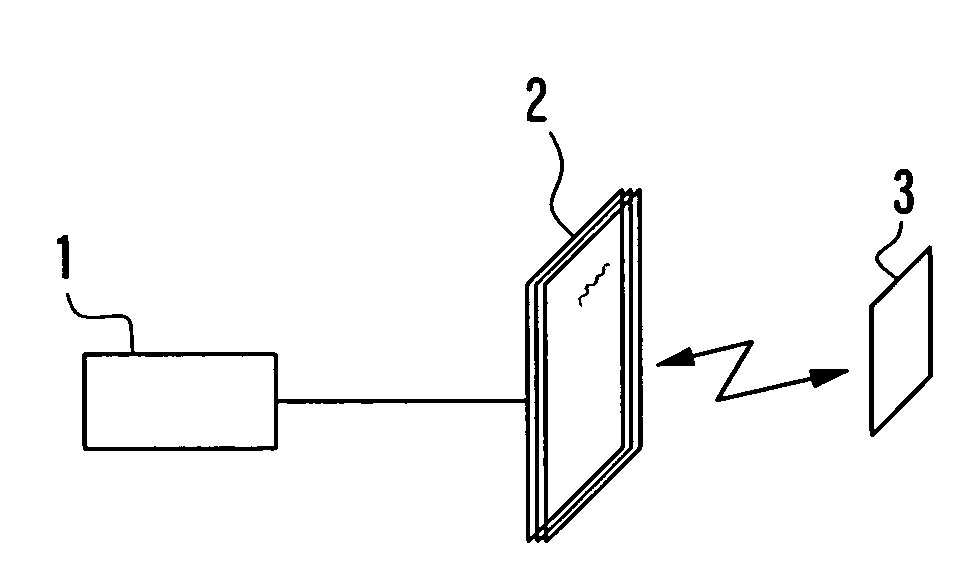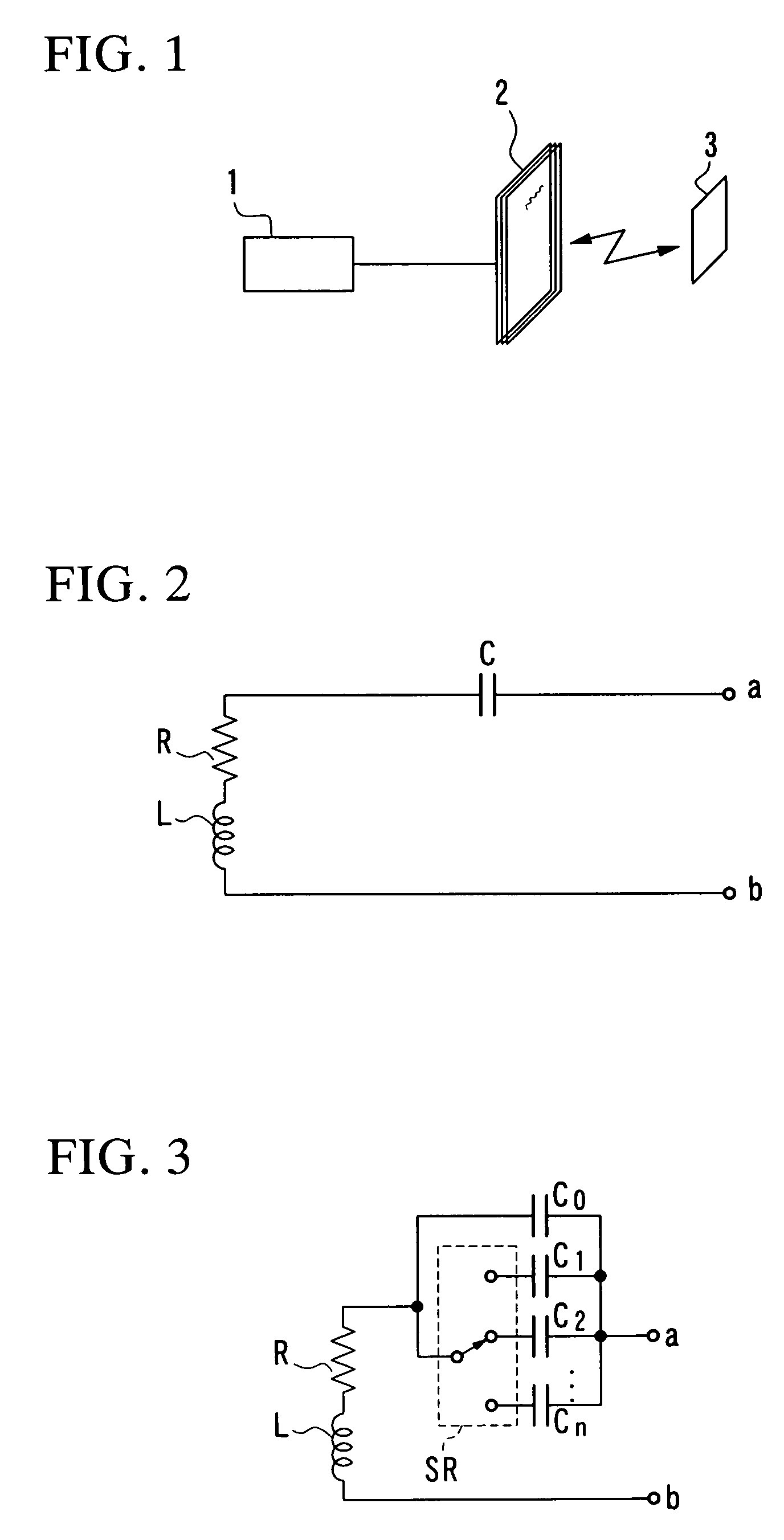Antenna device of interrogator
an interrogator and antenna technology, applied in the direction of instruments, near-field systems using receivers, sensing by electromagnetic radiation, etc., can solve the problems of bar-code systems not being able to rewrite data, small amount of data, code systems
- Summary
- Abstract
- Description
- Claims
- Application Information
AI Technical Summary
Benefits of technology
Problems solved by technology
Method used
Image
Examples
first embodiment
[0053]FIG. 3 is a structural diagram of the first embodiment of the invention.
[0054]In this figure, the inductance component L of the antenna and the resistance component R of the antenna are the same constituting elements as those shown in FIG. 2, and capacitors C0, C1, C2, . . . , and Cn are provided in place of the capacitor C in FIG. 2. The capacitors C0, C1, C2, . . . , and Cn have one ends connected together.
[0055]The other ends of the capacitors C1, C2, . . . , and Cn are connected to respective selectable contacts of a rotary switch SR whose common contact is connected to the other end of the capacitor C0.
[0056]This structure permits the capacitor C0 to be connected in parallel to one of the capacitors C1, C2, . . . , and Cn. If the capacitors C1, C2, . . . , and Cn have different capacitances, the combined capacitance can be made variable.
[0057]Therefore, the resonance frequency of the antenna device can be kept at a predetermined value step by step by manipulating the rota...
second embodiment
[0058]FIG. 4 shows the second embodiment of the invention.
[0059]The capacitors C0, C1, C2, . . . , and Cn in this figure respectively correspond to those capacitors with the same symbols in FIG. 3. In the second embodiment, semiconductor switches S1, S2, . . . , and Sn are provided in place of the rotary switch SR.
[0060]The opening and closing of the semiconductor switches S1, S2, . . . , and Sn are controlled by a control circuit CC1 in such a way as to maintain the resonance frequency of the antenna device at a predetermined value.
[0061]In this example, only one of the semiconductor switches S1, S2, . . . , and Sn may be turned on or plural semiconductor switches may be turned on to increase the combined capacitance.
third embodiment
[0062]FIG. 5 shows the third embodiment of the invention.
[0063]In this embodiment, the capacitor C is fixed, and the inductance of a tapped inductor LT connected in series to the LR circuit is changed by switching the taps on the inductor LT, thereby varying the inductance of the inductor L.
[0064]The opening and closing of the semiconductor switches S1, S2, . . . , and Sn are controlled by a control circuit CC2 in such a way as to maintain the resonance frequency of the antenna device at a predetermined value. It is to be noted, however, that unlike the second embodiment, the third embodiment controls the switching action so as to turn on only one of the semiconductor switches S1, S2, . . . , and Sn.
[0065]As a modification of the third embodiment, taps may be provided on the antenna coil instead of providing the tapped inductor LT so that the resonance frequency is adjusted by switching the taps from one to another.
PUM
 Login to View More
Login to View More Abstract
Description
Claims
Application Information
 Login to View More
Login to View More - R&D
- Intellectual Property
- Life Sciences
- Materials
- Tech Scout
- Unparalleled Data Quality
- Higher Quality Content
- 60% Fewer Hallucinations
Browse by: Latest US Patents, China's latest patents, Technical Efficacy Thesaurus, Application Domain, Technology Topic, Popular Technical Reports.
© 2025 PatSnap. All rights reserved.Legal|Privacy policy|Modern Slavery Act Transparency Statement|Sitemap|About US| Contact US: help@patsnap.com



